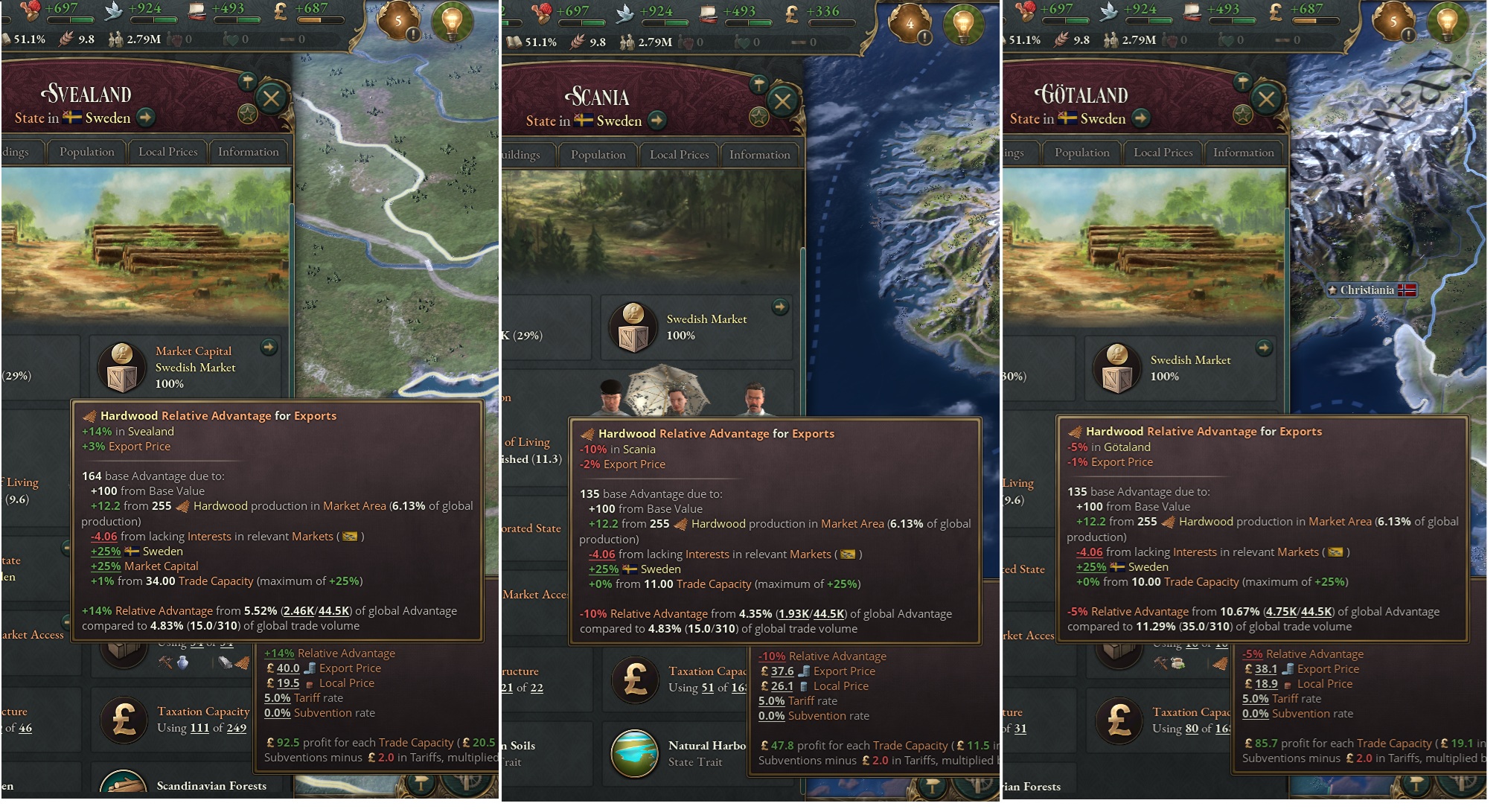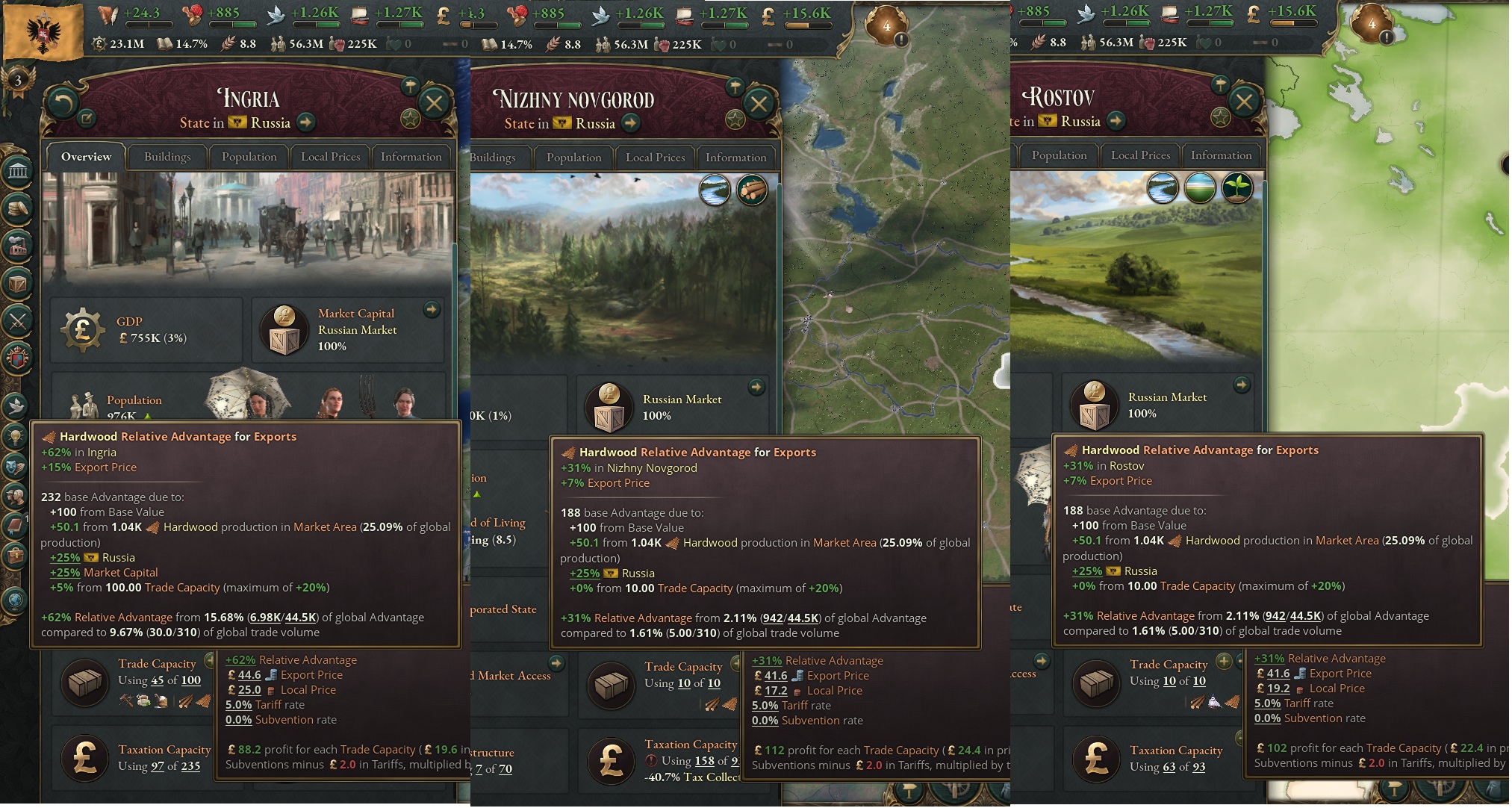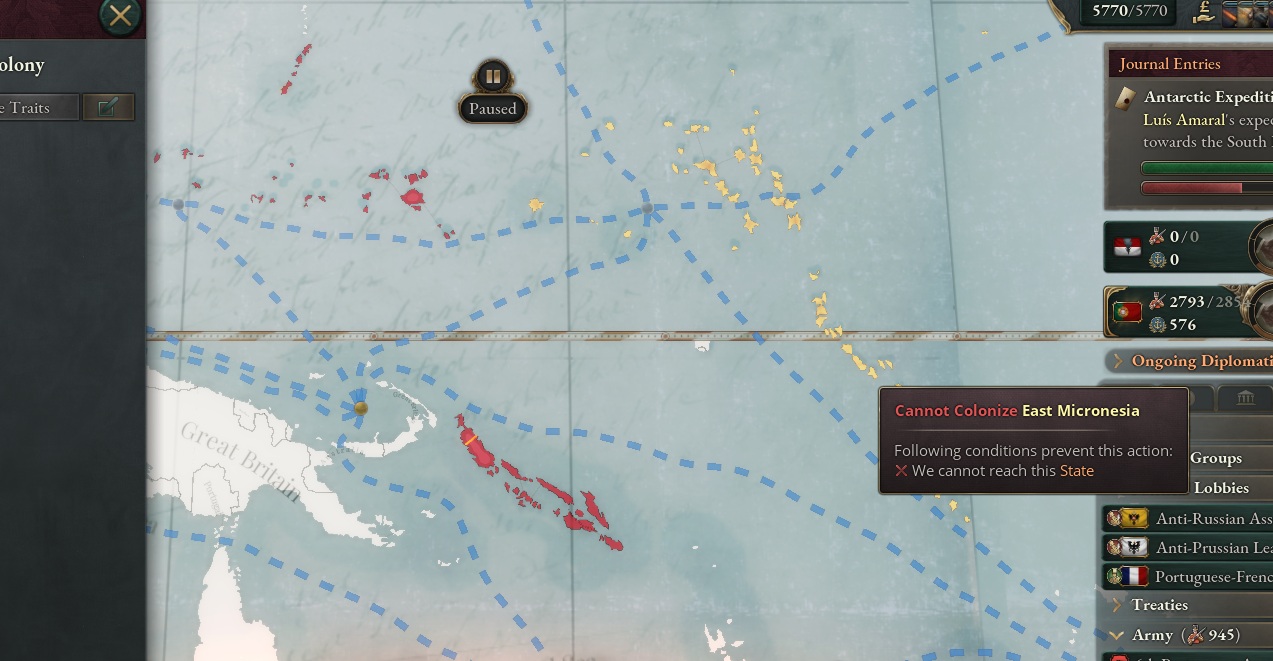I’ve taken time to analyze how the new trade system works. It offers a high level of convenience, especially by removing the need to manually manage trade routes.
However, I’ve identified several issues that need attention:
The game crashes frequently at the beginning, likely due to the overwhelming number of automatically generated trade routes. It seems the system struggles to handle this load properly.
Currently, trade advantage heavily favors countries with large, contiguous market areas. That’s because one of the main factors contributing to trade advantage is the total production volume within a market area.
This approach is problematic. A market area in the game is defined as the full network of connected regions within a country. This means that larger countries, like Russia or the USA, automatically gain a strong trade advantage—even without true specialization or efficiency. Simply being large becomes the dominant factor.
This does not reflect realistic trade dynamics and undermines strategic depth. I believe the concept of trade advantage needs to be reworked.
Imagine you play as Sweden and choose to specialize in wood production. You research the relevant technologies, improve production efficiency, and even establish IKEA to increase demand. You build colonies around the world and become the top global wood producer.
Despite all this, Sweden’s trade advantage remains lower than Russia’s or the USA’s—simply because your territories are scattered across disconnected market areas. The game fails to reflect your specialization, productivity, and strategic expansion.
How It Works (Based on Sweden and Russia – See Attached Images)
This system unintentionally causes dispersed colonial provinces to compete against each other, rather than acting as parts of a unified trade empire. Mechanically, it rewards single, contiguous market areas—like Russia’s—more than specialized but scattered empires like Sweden’s.


I propose the following revised basis for calculating trade advantage:
These changes would make trade advantage more reflective of real specialization and economic focus—rather than just territorial size.
Additional Request: Pacific Islands and Oceania Formation
Please consider either removing unpassable islands or automatically assigning them to the country with the largest presence in the Pacific region. Right now, I can’t form Oceania due to unclaimable islands blocking the decision. Thank you!

However, I’ve identified several issues that need attention:
1. Stability Issues
The game crashes frequently at the beginning, likely due to the overwhelming number of automatically generated trade routes. It seems the system struggles to handle this load properly.
2. Trade Advantage – Structural Problem
Currently, trade advantage heavily favors countries with large, contiguous market areas. That’s because one of the main factors contributing to trade advantage is the total production volume within a market area.
This approach is problematic. A market area in the game is defined as the full network of connected regions within a country. This means that larger countries, like Russia or the USA, automatically gain a strong trade advantage—even without true specialization or efficiency. Simply being large becomes the dominant factor.
This does not reflect realistic trade dynamics and undermines strategic depth. I believe the concept of trade advantage needs to be reworked.
Example: Sweden and Specialization
Imagine you play as Sweden and choose to specialize in wood production. You research the relevant technologies, improve production efficiency, and even establish IKEA to increase demand. You build colonies around the world and become the top global wood producer.
Despite all this, Sweden’s trade advantage remains lower than Russia’s or the USA’s—simply because your territories are scattered across disconnected market areas. The game fails to reflect your specialization, productivity, and strategic expansion.
How It Works (Based on Sweden and Russia – See Attached Images)
- Global Trade Advantage Calculation
The game first calculates the trade advantage across the entire market area.- As you can see in the attached images, all provinces within a market area receive the same base trade advantage.
- Capitals and centers of commerce receive a small bonus (+25%).
- In Sweden’s case, Skåne suffers a penalty in 1836 due to infrastructure issues (which I fixed for this test).
- Local Advantage Computation
The game then calculates each province’s share of global trade advantage:- It multiplies the global trade advantage in that market area by the amount of goods exported from that province. This can be a huge bonus for every province if the production is large
- This value is then divided by the sum of similar calculations for all provinces worldwide.
- The result is a relative score in %
- Price Bonus Allocation
Finally, the game compares the province's percentage of trade advantage to its share of global exports.- If the trade advantage is higher than the export share in %, the exporter receives a price bonus, how much exactly in not clear.
This system unintentionally causes dispersed colonial provinces to compete against each other, rather than acting as parts of a unified trade empire. Mechanically, it rewards single, contiguous market areas—like Russia’s—more than specialized but scattered empires like Sweden’s.


Suggested Improvements for Trade Advantage
I propose the following revised basis for calculating trade advantage:
- Population Involvement
The percentage of the population working in a specific industry (relative to the world average) should indicate specialization. This could be the primary indicator of trade advantage. - Productivity per Worker
Countries with higher productivity per worker in a specific industry should receive a stronger trade advantage. - Throughput and Company Effects
Throughput represents scale and efficiency. Countries that found companies and achieve higher throughput in a given industry should have this reflected in their trade advantage. - Area of Interest vs. Market Area
Trade advantage should be tied to performance within an area of interest (e.g., a colony or region), not to the overall market area.- This would reduce the penalty for colonial nations or island-based economies, which currently suffer because each island is treated as a separate market area.
- It also creates meaningful strategic choices where to specialize, such as developing industrial metropoles versus agricultural colonies.
- Finally, it allows smaller or mid-sized countries to compete if they truly specialize and innovate within a given sector.
These changes would make trade advantage more reflective of real specialization and economic focus—rather than just territorial size.
Additional Request: Pacific Islands and Oceania Formation
Please consider either removing unpassable islands or automatically assigning them to the country with the largest presence in the Pacific region. Right now, I can’t form Oceania due to unclaimable islands blocking the decision. Thank you!

Attachments
- 4
- 3
- 1


